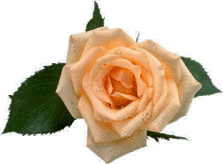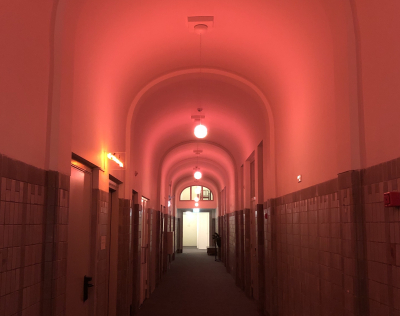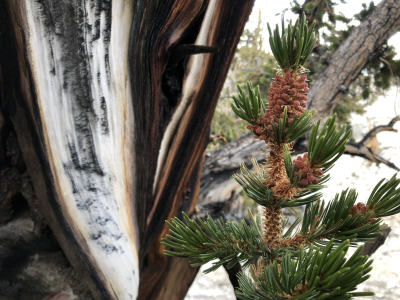Alex Ross's Blog, page 61
March 9, 2020
Émigré postscript
Marta Feuchtwanger mit Katze.
Pursuant to my recent New Yorker essay about German-speaking novelists in Los Angeles, I've gathered here some bibliographic notes and suggestions for further reading.
The most formidable single-volume study of the emigration is Jean-Michel Palmier's 1987 book Weimar in Exile: The Antifascist Emigration in Europe and America. Verso Books published David Fernbach's translation in 2007. It's an extraordinary resource, although its grasp of the American context is wanting. For example: "Though catering for a whole continent, American culture was often reduced to a few theatres of streets. Outside of New York American cities had very few large theatres, opera houses or symphony orchestras..." The definitive history of the emigration, when it is written, will have to delve deeper than that. Far more nuanced in its approach is Ehrhard Bahr's Weimar on the Pacific, also published in 2007. The emphasis here is on literary figures — Brecht, the Manns, Werfel, and Döblin — alongside Adorno, Rudolph Schindler, Richard Neutra, Schoenberg, and Fritz Lang. I also consulted Anthony Heilbut's Exiles in Paradise; Stephanie Barron's Exiles and Émigrés; Joseph Horowitz's Artists in Exile; John Russell Taylor's Strangers in Paradise; Kevin Starr's The Dream Endures, from his great cycle of California histories; Otto Friedrich's City of Nets; and vol. 1 of John M. Spalek and Joseph Strelka's Deutsche Exilliteratur seit 1933 (1976).
Salka Viertel's memoir The Kindness of Strangers, which New York Review Books recently reissued, is perhaps the best short introduction to the world of the emigration. Donna Rifkind's The Sun and Her Stars fleshes out that self-portrait and ably sketches surrounding figures, notably Schoenberg. (Viertel's keen appreciation for Schoenberg is undoubtedly connected to the fact that her brother was the pianist Eduard Steuermann, a pioneering interpreter of the Second Viennese School.) Some lively passages on émigré life can be found in Passionate Spirit, Cate Haste's new biography of Alma Mahler-Werfel, though I was less than fully convinced by its attempt to rehabilitate a deeply problematic figure. Oliver Hilmes's Malevolent Muse, despite its needlessly brutal title, gives a more persuasive picture, with emphasis on Mahler-Werfel's appalling anti-Semitism. Cathleen Schine wrote perceptively about her in January for the New York Review of Books. In the course of my reading, I also dipped into the popular novels of Vicki Baum and read her memoir, It Was All Quite Different. Before finding fame with Grand Hotel, Baum was a professional harpist, and was married to the conductor Richard Lert.
The literature on Thomas Mann is fairly vast. For translations of his major novels, I strongly recommend John E. Woods's work for Knopf: Buddenbrooks, The Magic Mountain, Joseph and His Brothers, and Doctor Faustus. I strongly urge the avoidance of the old Lowe-Porter translations, although in some cases these are the only option (Lotte in Weimar, The Holy Sinner, and Felix Krull in particular). Tobias Boes's Thomas Mann's War is an excellent new overview of the author's American period. I'd hope, though, that we eventually see translations of Hans Rudolf Vaget's Thomas Mann, der Amerikaner, and of its companion volume, Seelenzauber: Thomas Mann und die Musik. Anthony Heilbut's Thomas Mann: Eros and Literature, which I reviewed for The New Yorker in 1996, gauges the literary impact of Mann's sexuality. Randol Schoenberg's recent publication The "Doctor Faustus" Dossier, with an introduction by Adrian Daub, gathers documentary materials related to the great Mann-Schoenberg feud, with an understandable bias in the Schoenberg direction. (On the subject of Faustus, I can't helping inserting a link to my Adrian Leverkühn Companion.) Recordings of a few of Mann's English-language addresses can be found online, along with some of his excoriating Deutsche Hörer broadcasts. The 1945 essay/lecture "Germany and the Germans" can be heard courtesy of the University of Maryland. The magnificent self-critical peroration — "It is all within me, I have been through it all" — begins at around 1:05.
Franz Werfel was once one of the most celebrated and successful novelists in any language, with The Song of Bernadette, his tale of the visions at Lourdes, selling into the millions in the 1940s. If you see him through the lens of that expert feat of populist religious literature, you will be unprepared for the impact of The Forty Days of Musa Dagh, which Verba Mundi reissued in 2012, with Geoffrey Dunlop's original 1934 translation revised and extended by James Reidel. (The 1934 publication had omitted about a quarter of the text.) It is a magisterial, darkly prophetic work, with an ending that might knock you sideways, as it did me. Star of the Unborn, Werfel's bizarre and at times eerily visionary final novel, is, alas, long out of print. In the 1980s, three of the four volumes of Alfred Döblin's November 1918 cycle were translated into English by John E. Woods; these are worth hunting down in libraries and used-book stores, though one has to be prepared for some eccentric narrative decisions on Döblin's part — for example, his hero-worship of Woodrow Wilson and his choice to have Rosa Luxemburg undergo a Christian conversion. (Döblin baffled many of his contemporaries by taking a turn toward Catholicism.) Heinrich Mann, Thomas's brother, is a vastly interesting figure in his own right, and I won't attempt to sum him up in a sentence or two, particularly since I write about him at greater length in Wagnerism. For my New Yorker piece, I read Heinrich's two novels about Henri IV of France, which, while lacking the slashing force of Der Untertan or Professor Unrat, are vibrant exercises in historical fiction, on par with Werfel and Feuchtwanger's books of the same era.
Feuchtwanger, a writer and personality of enormous vitality, is now little more than a name to many readers, but he is very much worth revisiting. His 1925 novel Jud Süss, a retelling of the life of Joseph Süß Oppenheimer, has been tragically overshadowed by the horrifying anti-Semitic propaganda film that Goebbels commissioned in 1940, under that title; Goebbels would be pleased that his hymn of hate has to a great extent obliterated the original. Feuchtwanger's "Oppermann" trilogy gives a sweeping overview of German-Jewish lives in the 1920s and 30s; the best in the series is the last, Exil, translated as Paris Gazette. The Feuchtwanger Memorial Library at USC has overseen an edition of the author's diaries, titled Ein möglichst intensives Leben — not as deliciously revealing as Thomas Mann's, but stocked with deft sketches of personalities of the period. USC Libraries and Aufbau have also reissued The Devil in France, Feuchtwanger's unsettling account of prison-camp life in France in 1939 and 1940. Alas, the author's California-period diaries appear not to have survived. If you want to while away some hours in a very pleasant way, listen to Lawrence Weschler's interviews with Marta Feuchtwanger, some of which can be heard on UCLA's oral-history website. Here is her description of the Viertel salon; and here is her remarkable summary of Thomas Mann ("...it seems that he recognized his error; maybe that was the reason that he was so terribly upset about the whole thing, more than anybody else").
Because I limited my focus to the L.A. circle, neither Anna Seghers nor Klaus Mann really belonged in the discussion — Seghers spent the war in Mexico City, Mann was mostly in New York and with the U. S. Army in Europe — but I shoehorned them in nonetheless. New York Review Books has done a huge service by issuing translations of Seghers's Transit and The Seventh Cross. The first is a savage portrait of refugee desperation in Marseille in 1940; the second is a riveting modernist thriller about a young Communist who escapes a Gestapo camp and goes into hiding. Both translations, by the late Margot Bettauer Dembo, do justice to the terse, hard-boiled quality of Seghers's prose. As for Klaus, whom Glenway Westcott cruelly called "the tragic twerp," he is now remembered mainly for Mephisto, but his chaotic masterpiece is the exile novel Der Vulkan, which cries out for translation. Frederic Spotts told of Klaus's short, unhappy life in the 2016 biography Cursed Legacy; among other things, he casts doubt on the idea that Klaus committed suicide, at least deliberately.
Having written many times about musical émigrés, both in The Rest Is Noise and in sundry New Yorker articles, I steered somewhat clear of that terrain in this piece. But the literature is large and ever-growing. It includes Reinhold Brinkmann's Driven into Paradise; Dorothy Lamb Crawford's A Windfall of Musicians: Hitler's Émigrés and Exiles in Southern California; Sabine Feisst's Schoenberg's New World and Schoenberg's Correspondence with American Composers; Mark Berry's incisive brief Schoenberg biography; Kenneth Marcus's Schoenberg and Hollywood Modernism; and H. Colin Slim's Stravinsky in the Americas. Of particular interest in this male-dominated field is Lily Hirsch's short, rich life of Anneliese Landau; a foretaste can be found in this essay on the website of the OREL Foundation, which is based in Southern California and works assiduously to honor exiled or murdered composers and musicians. One can also read there about Walter Arlen, who is still going strong at ninety-nine, and whose music has been rediscovered in recent years. Not long ago, at the Thomas Mann house, Walter told me of his encounters with the novelist and with other major figures. In the same connection I must mention the all-remembering Norman Lloyd, who related this story: "Once, I found myself in Schoenberg’s living room, with Schoenberg, listening to the ‘Parsifal’ music as conducted by Leopold Stokowski. And he’s listening ... and he’s listening ... and then he says, ‘Not bad ... for Stokowski.’ ”
If you want to go on a driving tour of émigré houses, a map of Arnold Schoenberg's Los Angeles is a good starting point. A more thorough map can be found in Stephanie Barron's Exiles and Émigrés. Almost all of the houses are privately owned, and I cannot vouch for what would happen if one rang doorbells. (I did have one lucky experience when I went to look at Brecht's house with USC's Sasha Anawalt, her students, and the author Geoff Dyer.) Several of the landmarks of modernist architecture - the Rudolph Schindler house in West Hollywood and Richard Neutra's VDL Studio by the Silver Lake Reservoir — are open to the public. The current owners of Neutra's astounding Lovell Health House in the Los Feliz hills offer tours on Saturdays. It finally remains to mention the two great émigré houses that are now under the joint aegis of the German government: Feuchtwanger's Villa Aurora and the Thomas Mann house, both in Pacific Palisades. Neither is regularly open to the public, although events and concerts happen periodically at the Villa Aurora. I wrote twice about the Mann house for the New Yorker website; I'm now honored to serve on its advisory board. I confess to having felt a certain shiver when I first stood in the room where Doctor Faustus was written.
March 2, 2020
The Los Angeles exiles
February 20, 2020
Nightafternight playlist
New and recent releases of interest.
— Adès, Piano Concerto, Totentanz; Adès conducting the Boston Symphony, with Kirill Gerstein, Mark Stone, Christianne Stotijn (DG, out 2/28)
— Liza Lim, Extinction Events and Dawn Chorus; Sophie Schafleitner, Lorelei Dowling, Klangforum Wien cond. Peter Rundel and Stefan Asbury (Kairos)
— Anna Höstman, Harbour and other works; Cheryl Duvall (Redshift)
— Jennifer Walshe, A Late Anthology of Early Music, Vol. 1: Ancient to Renaissance (Tetbind)
— Alex Hills, OutsideIn and other works; Aisha Orazbayeva, EXAUDI (Carrier)
— Handel, Agrippina; Joyce DiDonato, Elsa Benoit, Luca Pisaroni, Franco Fagioli, Jakub Józef Orliński, Andrea Mastroni, Carlo Vistoli, Biagio Pizzuti, Marie-Nicole Lemieux, Maxim Emelyanychev leading Il Pomo d'Oro (Erato)
— Samuel Feinberg, Piano Sonatas; Marc-André Hamelin (Hyperion)
— Clairières: Songs by Lili Boulanger and Nadia Boulanger; Nicholas Phan, Myra Huang (Avie)
— Bach, Cello Suites, transcribed for violin; Johnny Gandelsman (MVD)
— Schoenberg, Violin Concerto, Verklärte Nacht: Isabelle Faust, Daniel Harding conducting Swedish Radio Symphony (Harmonia Mundi)
— Sorabji, Sequentia cyclica super "Dies Irae" ex Missa pro defunctis; Jonathan Powell (Piano Classics, 7 CDs)
February 14, 2020
For Reinbert de Leeuw
The great Dutch conductor, composer, and pianist died today at the age of eighty-one. His contributions to the promotion of new and unsung music were vast: Andriessen, Ustvolskaya, Kurtág, Ligeti, Gubaidulina, Ruth Crawford Seeger, Claude Vivier, Mauricio Kagel, and on and on. His 1994 performance of Messiaen's Des Canyons aux étoiles at Tanglewood remains a touchstone of my listening life. He also had few peers as an exponent of the music of Erik Satie. He will be remembered long after most of today's celebrity conductors are forgotten: he mattered far more to the music of our time.
My Bloody Alban Berg Valentine
"Here the incomprehensible, immeausurable sorrow that burns my soul can find release."
— Altenberg Lieder
Previously: An Alban Berg Valentine, Another Alban Berg Valentine, Yet Another Alban Berg Valentine, Return of Alban Berg Valentine, Nothing says forever like an Alban Berg Valentine, Alban Berg Valentine (10th anniversary edition), Alban Berg Valentine (2017 edition), Will you be my Alban Berg Valentine?, Eternity, by Alban Berg Valentine.
February 3, 2020
Honeck in Pittsburgh
February 1, 2020
Noteworthy
January 31, 2020
Amsterdam playlist
Here, as promised to several people who were in attendance, is a playlist for my event today with the Calder Quartet at the Amsterdam String Quartet Biennale. It was again a deep pleasure to participate in this singular gathering. The theme was music from the American West Coast, with a few digressions.
Stravinsky, Three Pieces for String Quartet
Henry Cowell, The Tides of Manaunaun
Cowell, Quartet Euphometric
Dane Rudhyar, "Stars" from Pentagrams
Harry Partch, "There Are Rides On The Highway At Green River" from US Highball
Lou Harrison, The Perilous Chapel
John Cage, "Quietly flowing along" from String Quartet in Four Parts
Webern, Five Movements for String Quartet
Discussion of La Monte Young
Terry Riley, excerpt from String Quartet (1960)
James Tenney, Saxony
Michael Pisaro, "Fool" from Tombstones
Michelle Lou, HoneyDripper
Andrew Norman, Sabina
January 15, 2020
Among the oldest trees
The Bristlecones Speak. The New Yorker, Jan. 20, 2020.
When I spent time in Death Valley in 2016, I became mesmerized by the sight of Great Basin bristlecone pines clinging to the slopes of Telescope Peak, the highest mountain in the area. I soon made my way to the Ancient Bristlecone Pine Forest, in the White Mountains, northwest of Death Valley. I made several visits there in recent months, talking to scientists about these extraordinary trees, the world's oldest. The piece above is the result. I obviously owe a huge debt of gratitude to Andy Bunn, Matt Salzer, Brian Smithers, Connie Millar, and Tim Forsell, who served as my guides. (A connection to my day job: Andy's parents, Frank and Betsy Bunn, are longtime supporters of Emmanuel Music.) I enjoyed the hospitality of the volunteer crew of GLORIA Great Basin, an organization worthy of support. I also received excellent counsel from Jared Farmer, who is writing an eagerly anticipated book about the bristlecones and the mystique of ancient trees. Above all, I thank The New Yorker for letting me go on such strange jaunts.
The Ancient Bristlecone Pine Forest is closed for the winter and won't reopen until some time in May, when the roads are cleared of snow. If you go, I recommend setting aside a full day: the walk through the Schulman Grove, the main visitor area, takes about three hours, and the drive up to the Patriarch Grove, another site of spectacular old bristlecones, takes about an hour. If you are not of the camping persuasion, there are decent places to stay in Big Pine and Bishop. Matt, Andy, and I recommend the somewhat paralyzing burgers at Aaron Schat's. The Eastern California Museum in Independence is very much worth a visit, as is the former internment camp at Manzanar, the darkest of American national parks. Anyone passing through Tucson should take a look at the Laboratory of Tree-Ring Research, which has exhibits in its lobby, including A. E. Douglass's pioneering tree-ring chronology. Someday I hope to visit the Great Basin National Park in Nevada, where remains of the Prometheus tree can still be seen on Wheeler Peak. I also hope one day to catch a glimpse of Campito, the ghost horse of the White Mountains. If you follow that last link, you'll find many more mountain and desert stories by Tim Forsell.
A reading list: Michael Cohen, A Garden of Bristlecones; Ronald Lanner, The Bristlecone Book; Donald J. McGraw, Edmund Schulman and the "Living Ruins"; Jared Farmer, Trees in Paradise; Darwin Lambert, Great Basin Drama; Peter Wohlleben, The Hidden Life of Trees; George Ernest Webb, Tree Rings and Telescopes: The Scientific Career of A.E. Douglass; Colin Renfew, Before Civilization: The Radiocarbon Revolution and Prehistoric Europe; David Muench, Timberline Ancients; Rachel Sussman, The Oldest Living Things in the World; Ashee Noren, Ranger Al Noren; scholarly articles by Edmund Schulman, Wes Ferguson, Bryant Bannister, Val LaMarche, Malcolm Hughes, Charlotte Pearson, Matt Salzer, Brian Smithers, Connie Millar, and Barbara Bentz, among others.
Alex Ross's Blog
- Alex Ross's profile
- 425 followers


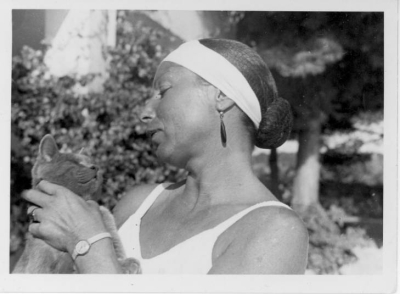
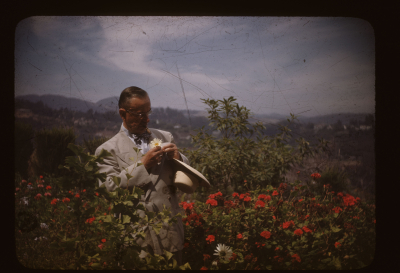
![Adès conducts Adès Cover_3000x3000Px_191210_final[2]](https://i.gr-assets.com/images/S/compressed.photo.goodreads.com/hostedimages/1582300582i/29000183.jpg)
